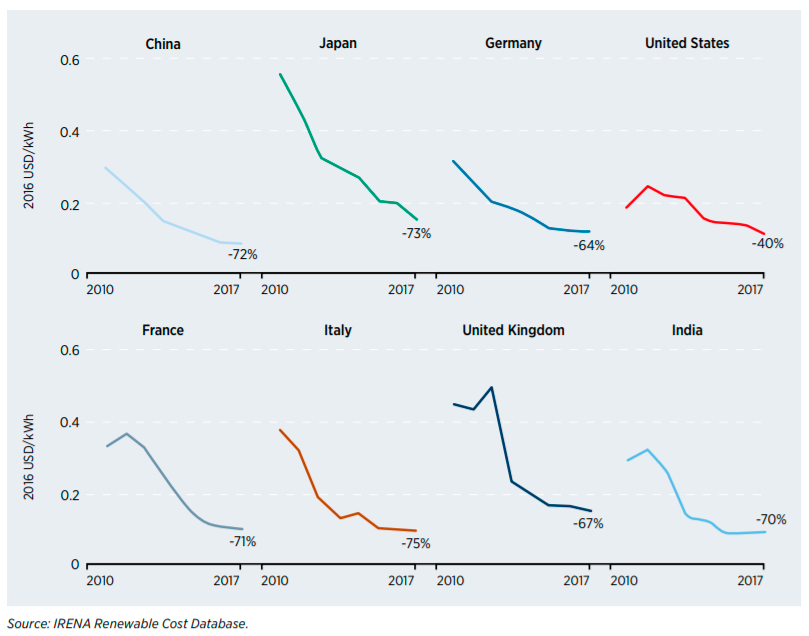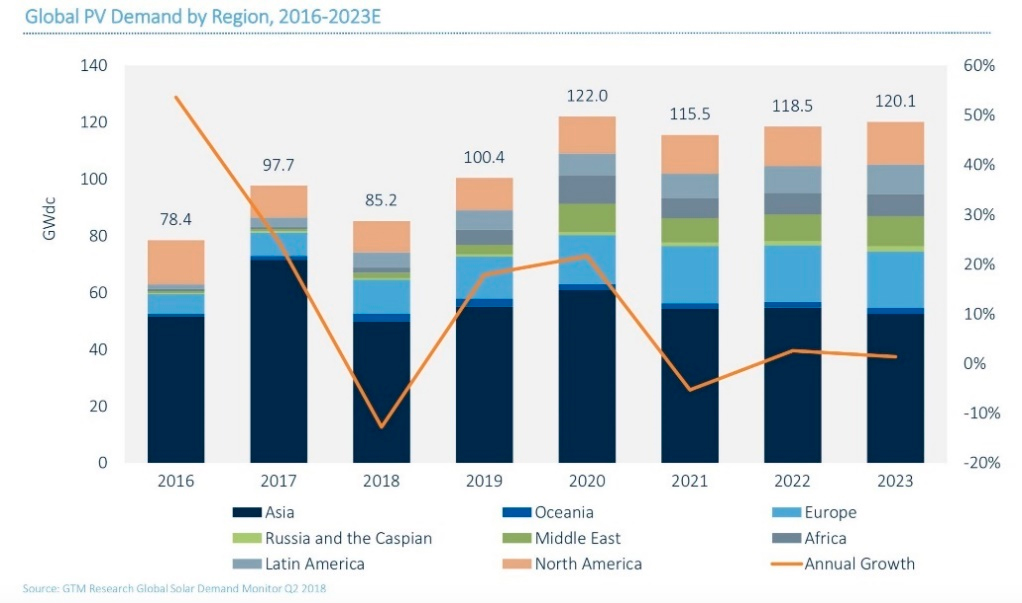Countries with more growth potential are betting on making an energy transition towards clean sources in order to reduce CO2 emissions and avoid global warming, and among the energy mix, photovoltaics have seen exponential growth, becoming one of the most competitive and attractive renewable energies for governments and investors.
Initially, massive installations were mainly made in Europe, making certain countries of the union the dominant technological market, but as of 2011 Asian countries have become strongly committed to this technology and, year after year, they have been establishing themselves as leaders in the sector.

Proof of this was the global power accumulated in 2017, which reached 404.5GW, almost double that accumulated in 2015. In total, 99.1GW of power was installed in 2017, which represents a new record, of which 52.8GW was installed in China.
The photovoltaic sector is a booming market, society is increasingly aware that respect for and conservation of the environment are important, and in years to come a positive evolution in this market is expected, surpassing in about half a year to a year the power installed in the years before that.

But apart from the new geographic markets, the sector has also undergone a significant technological evolution in both products and in production processes. As for product standards, they have changed since photovoltaic modules were composed of 2 or 3BB, as nowadays the standard has evolved up to 5BB, and we are already talking about up to 12BB or Multiwire technologies.
In addition, new configurations of modules have come onto the market, such as bi-facial modules, shingling, half cells or glass-glass.
There has also been an evolution in cell technologies, currently PERC cells have become the predominant type on the market, but there are also others that are slowly making a name for themselves such as Heterounion.
All technologies show very specific characteristics, and not all of them can be treated with the current manufacturing standards.
Koniker’s research areas are focused on the entire production chain of the photovoltaic module, from product technologies to manufacturing technology:
- Development of new Tabber Stringer machine architectures. Newmethods of interconnection are being investigated, such as conductive adhesives(ECA) or Back Contack technologies.
- New module technologies: Modules for extreme conditions such asin the desert, glass-glass modules, bi-facial modules, shingling modules,…
- Research into new lamination methods.
- Profiling for the manufacture of supports and structures
- Inspection of modules: Use of artificial intelligence (Machineand Deep Learning) for quality control by electro-luminescence
- Use of Industry 4.0 technologies for process controlsand efficiency management of the production line.

